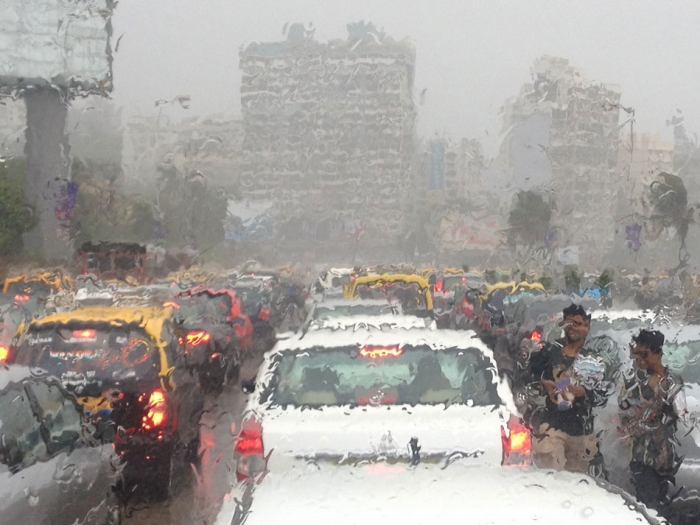MBA Trip to India
MBA Trip to India

Posted by Martin Nixon
No amount of prior research, whether it be from documentaries or YouTube clips, best-selling novels such as Shantaram or – dare I say it – even the much-lauded film Slumdog Millionaire, can prepare a first-time visitor for the sensory overload they’ll experience in this most extraordinary city. You simply have to go there.
I returned from Mumbai last Sunday, having flown there with a cohort of fellow students from the World First MBA programme at Falmouth University. For me it was a trip that I’ll never forget. At times I felt I had somehow stumbled onto the set of a movie, a bizarre mixture of Mad Max and The Hitchhiker’s Guide to the Galaxy, or alternatively, a post-apocalyptic cityscape inspired by blending Terminator with The Jungle Book.
Extreme contrast are the two most immediate words that come to my mind when thinking of how to communicate a sense of what the visitor sees on every street corner. There were two half-naked toddlers at the once imperial and imposing Crawford Street Market, who I watched as they combed through filthy litter for some leftovers to eat in the shadow cast by a gleaming new Rolls Royce Ghost. And then there are luxury apartments with tall air-conditioned marble-lined atriums built with commanding views over acres of fragile slums created from packing cases, plastic sheets and discarded advertising hoardings.
The number of people moving about the city streets is both bewildering and captivating. Everywhere I looked six or seven pairs of eyes stared back at me. No activity it seems, however simple, can be completed without the participation of at least ten more people than are required. From the cleaners polishing the marble floors of our hotel’s impressive lobby to the guide who insisted that he show us around Crawford Street Market; all the while distributing orders to his emerging network of wily assistants who fetched water and ran ahead to alert his second cousin that a group of affluent tourists were about to grace his sari shop. Given the scale of humanity and the depth of poverty in Mumbai, perhaps this over employment is just as well. In any case, the renumeration is so little that it hardly matters whether the taxi driver overcharges you by 50% - after all, we are still only talking about an average total fare of £1.
The British Empire finally departed via the majestically named Gate of India in South Mumbai, never to return, but evidence of its influence remains in the large public buildings which would look quite at home in Whitehall. Not least in the shabby pillared colonnades and rusting decorative iron railings at Chhatrapati Shivaji Terminus Railway Station. We woke at five to travel from here by train 300km north to visit the vast Essar Hazira steel plant at Surat, journeying past station after station with shady platforms bursting at the seams with people. The fact that the city can’t cope with the number of citizens is evident everywhere, but here on the platforms, amidst all manner of litter, detritus and stray dogs we saw young lovers, beggars, businessmen and women dressed in traditional saris cram onto the concourse before squeezing or throwing themselves into the doors of the already packed trains.
The sense of order that the British Empire brought to the railways may still be evident in the bright red shirts of the porters, and echoed in the uniformity of the thousands of black and yellow cabs, but a deep undercurrent of chaos is always evident, while the cheerful soundtrack of rapidly sounding car, taxi, bike and bus horns continues long into the humid Mumbai night.
